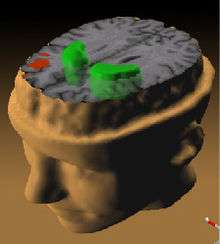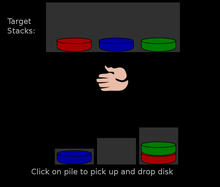Planning
Planning (also called forethought) is the process of thinking about and organizing the activities required to achieve a desired goal. It involves the creation and maintenance of a plan, such as psychological aspects that require conceptual skills. There are even a couple of tests to measure someone’s capability of planning well. As such, planning is a fundamental property of intelligent behavior.
Also, planning has a specific process and is necessary for multiple occupations (particularly in fields such as management, business, etc.). In each field there are different types of plans that help companies achieve efficiency and effectiveness. An important, albeit often ignored aspect of planning, is the relationship it holds to forecasting. Forecasting can be described as predicting what the future will look like, whereas planning predicts what the future should look like for multiple scenarios. Planning combines forecasting with preparation of scenarios and how to react to them. Planning is one of the most important project management and time management techniques. Planning is preparing a sequence of action steps to achieve some specific goal. If a person does it effectively, he can reduce much the necessary time and effort of achieving the goal. A plan is like a map. When following a plan, he can always see how much he has progressed towards his project goal and how far he is from his destination.
Planning topics
Psychological aspects

Planning is one of the executive functions of the brain, encompassing the neurological processes involved in the formulation, evaluation and selection of a sequence of thoughts and actions to achieve a desired goal. Various studies utilizing a combination of neuropsychological, neuropharmacological and functional neuroimaging approaches have suggested there is a positive relationship between impaired planning ability and damage to the frontal lobe.
A specific area within the mid-dorsolateral frontal cortex located in the frontal lobe has been implicated as playing an intrinsic role in both cognitive planning and associated executive traits such as working memory.
Disruption of the neural pathways, via various mechanisms such as traumatic brain injury, or the effects of neurodegenerative diseases between this area of the frontal cortex and the basal ganglia specifically the striatum (cortico-striatal pathway), may disrupt the processes required for normal planning function.[1]
Individuals who were born Very Low Birth Weight (<1500 grams) and Extremely Low BirthWeight (ELBW) are at greater risk for various cognitive deficits including planning ability.[2][3]
Neuropsychological tests

There are a variety of neuropsychological tests which can be used to measure variance of planning ability between the subject and controls.
- Tower of Hanoi (TOH-R), a puzzle invented in 1883 by the French mathematician Édouard Lucas. There are different variations of the puzzle, the classic version consists of three rods and usually seven to nine discs of subsequently smaller size. Planning is a key component of the problem solving skills necessary to achieve the objective, which is to move the entire stack to another rod, obeying the following rules:

- Tower of London (TOL) is another test that was developed in 1992 (Shallice 1992) specifically to detect deficits in planning as may occur with damage to the frontal lobe. Test participants with damage to the left anterior frontal lobe demonstrated planning deficits (i.e., greater number of moves required for solution).
In test participants with damage to the right anterior, and left or right posterior areas of the frontal lobes showed no impairment. The results implicating the left anterior frontal lobes involvement in solving the TOL were supported in concomitant neuroimaging studies which also showed a reduction in regional cerebral blood flow to the left pre-frontal lobe. For the number of moves, a significant negative correlation was observed for the left prefrontal area: i.e. subjects that took more time planning their moves showed greater activation in the left prefrontal area.[6]
Planning in public policy
Public policy planning includes environmental, land use, regional, urban and spatial planning. In many countries, the operation of a town and country planning system is often referred to as "planning" and the professionals which operate the system are known as "planners".
It is a conscious as well as sub-conscious activity. It is "an anticipatory decision making process" that helps in coping with complexities. It is deciding future course of action from amongst alternatives. It is a process that involves making and evaluating each set of interrelated decisions. It is selection of missions, objectives and "translation of knowledge into action." A planned performance brings better results compared to an unplanned one. A manager's job is planning, monitoring and controlling. Planning and goal setting are important traits of an organization. It is done at all levels of the organization. Planning includes the plan, the thought process, action, and implementation. Planning gives more power over the future. Planning is deciding in advance what to do, how to do it, when to do it, and who should do it. This bridges the gap from where the organization is to where it wants to be. The planning function involves establishing goals and arranging them in logical order.
Planning process

Patrick Montana and Bruce Charnov outline a three-step result-oriented process for planning:[7]
- Choosing a destination
- Evaluating alternative routes, and
- Deciding the specific course of your plan.
In organizations, planning is a management process, concerned with defining goals for company's future direction and determining on the missions and resources to achieve those targets. To meet the goals, managers may develop plans such as a business plan or a marketing plan. Planning always has a purpose. The purpose may be achievement of certain goals or targets.
Main characteristics of planning in organizations are:
Planning increases the efficiency of an organization. It reduces the risks involved in modern business activities. It utilizes with maximum efficiency the available time and resources. The concept of planning is to identify what the organization wants to do by using the four questions which are "where are we today in terms of our business or strategy planning? Where are we going? Where do we want to go? How are we going to get there?..." ⟨⟩
See also
- Automated planning and scheduling
- Architectural planning
- Business plan
- Collaborative planning, forecasting, and replenishment
- Comprehensive planning
- Contingency planning
- Economic planning
- Enterprise architecture planning
- Environmental planning
- Event planning
- Family planning
- Financial planning
- Futures studies
- Land use planning
- Landscape planning
- Lesson planning
- Life planning
- Marketing plan
- Network resource planning
- Operational planning
- Planning fallacy
- Project management
- Regional planning
- Site planning
- Spatial planning
- Strategic planning
- Succession planning
- Time management
- Urban planning
References
- ↑ Owen, AM (Nov 1997). "Cognitive planning in humans: neuropsychological, neuroanatomical and neuropharmacological perspectives". Prog Neurobiol. 53 (4): 431–50. doi:10.1016/s0301-0082(97)00042-7. PMID 9421831.
- ↑ Harvey, JM; O'Callaghan, MJ; Mohay, H (May 1999). "Executive function of children with extremely low birthweight: a case control study". Dev Med Child Neurol. 41 (5): 292–7. doi:10.1017/s0012162299000663. PMID 10378753.
- ↑ Aarnoudse-Moens, CS; Weisglas-Kuperus, N; van Goudoever, JB; Oosterlaan, J (Aug 2009). "Meta-analysis of neurobehavioral outcomes in very preterm and/or very low birth weight children". Pediatrics. 124 (2): 717–28. doi:10.1542/peds.2008-2816. PMID 19651588.
- ↑ Welsh, MC; Huizinga, M (Jun 2001). "The development and preliminary validation of the Tower of Hanoi-revised". Assessment. 8 (2): 167–76. doi:10.1177/107319110100800205. PMID 11428696.
- ↑ Anderson, JR; Albert, MV; Fincham, JM (Aug 2005). "Tracing problem solving in real time: fMRI analysis of the subject-paced Tower of Hanoi". J Cogn Neurosci. 17 (8): 1261–74. doi:10.1162/0898929055002427. PMID 16197682.
- ↑ Shallice, T. (1982). "Specific impairments of planning". Philosophical Transactions of the Royal Society of London. Series B, Biological Sciences. 298 (1089): 199–209. doi:10.1098/rstb.1982.0082. PMID 6125971.
- ↑ Barron's Management book fourth edition, Authors: Patrick J. Montana and Bruce H. Charnov
Further reading
| Wikimedia Commons has media related to Planning. |
| Look up planning in Wiktionary, the free dictionary. |
| Wikiquote has quotations related to: Planning |
- Allmendinger, Phil; Gunder, Michael (2005). "Applying Lacanian Insight and a Dash of Derridean Deconstruction to Planning's 'Dark Side'". Planning Theory. 4: 87–112. doi:10.1177/1473095205051444.
- Bazin, A. (2012). Bilateral and multilateral planning: Best practices and lessons learned. Strategos.
- Das, J P, Binod C Kar, Rauno K Parrila. Cognitive Planning: The Psychological Basis of Intelligent Behaviour. Sage Publications Pvt. Ltd; illustrated edition. English ISBN 0-8039-9287-4 ISBN 978-0-8039-9287-0
- Gunder, Michael (2003). "Passionate Planning for the Others' Desire: An Agonistic Response to the Dark Side of Planning". Progress in Planning. 60 (3): 235–319. doi:10.1016/s0305-9006(02)00115-0.
- Pløger, John (2001). "Public Participation and the Art of Governance". Environment and Planning B: Planning and Design. 28 (2): 219–241. doi:10.1068/b2669.
- Roy, Ananya (2008). "Post-Liberalism: On the Ethico-Politics of Planning". Planning Theory. 7 (1): 92–102. doi:10.1177/1473095207087526.
- Tang, Wing-Shing (2000). "Chinese Urban Planning at Fifty: An Assessment of the Planning Theory Literature". Journal of Planning Literature. 14 (3): 347–366. doi:10.1177/08854120022092700.
- Yiftachel, Oren, 1995, "The Dark Side of Modernism: Planning as Control of an Ethnic Minority," in Sophie Watson and Katherine Gibson, eds., Postmodern Cities and Spaces (Oxford and Cambridge, MA: Blackwell), pp. 216–240.
- Yiftachel, Oren (1998). "Planning and Social Control: Exploring the Dark Side". Journal of Planning Literature. 12 (4): 395–406. doi:10.1177/088541229801200401.
- Yiftachel, Oren (2006). "Re-engaging Planning Theory? Towards South-Eastern Perspectives". Planning Theory. 5 (3): 211–222. doi:10.1177/1473095206068627.